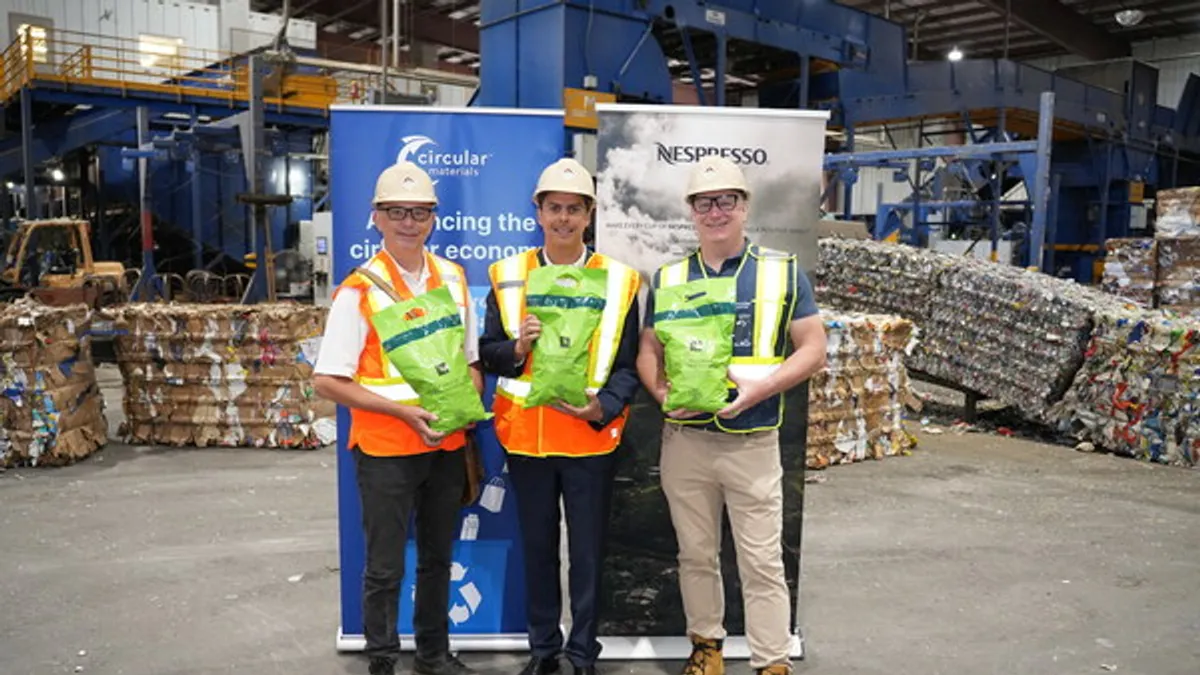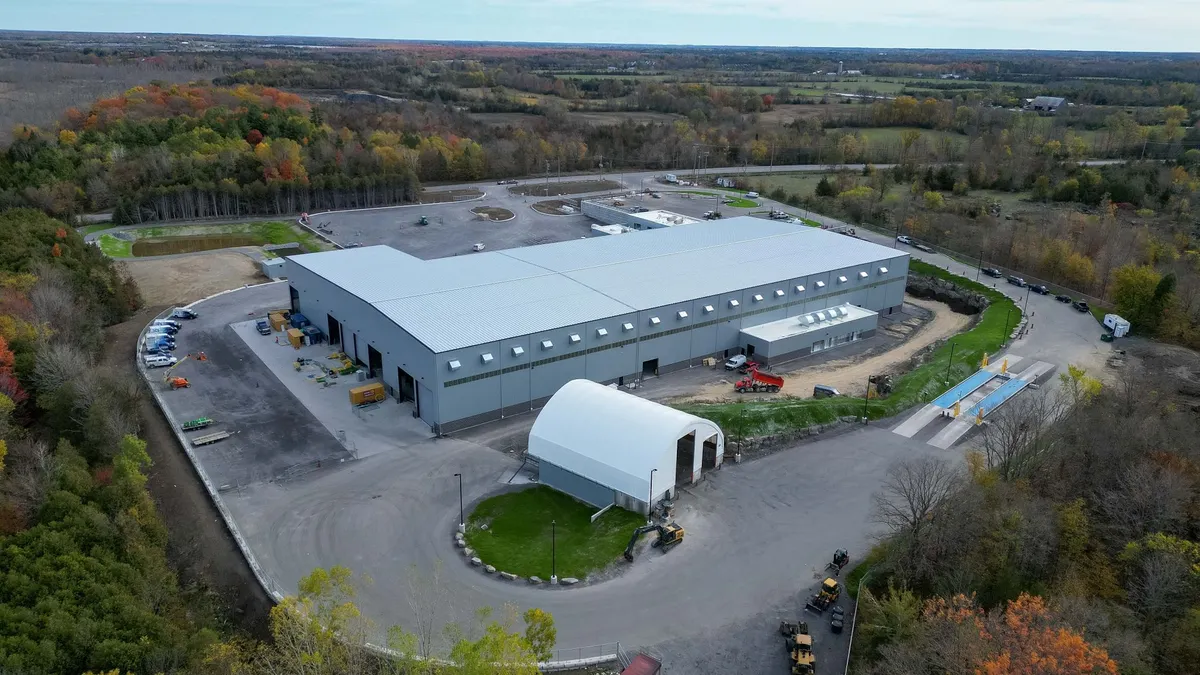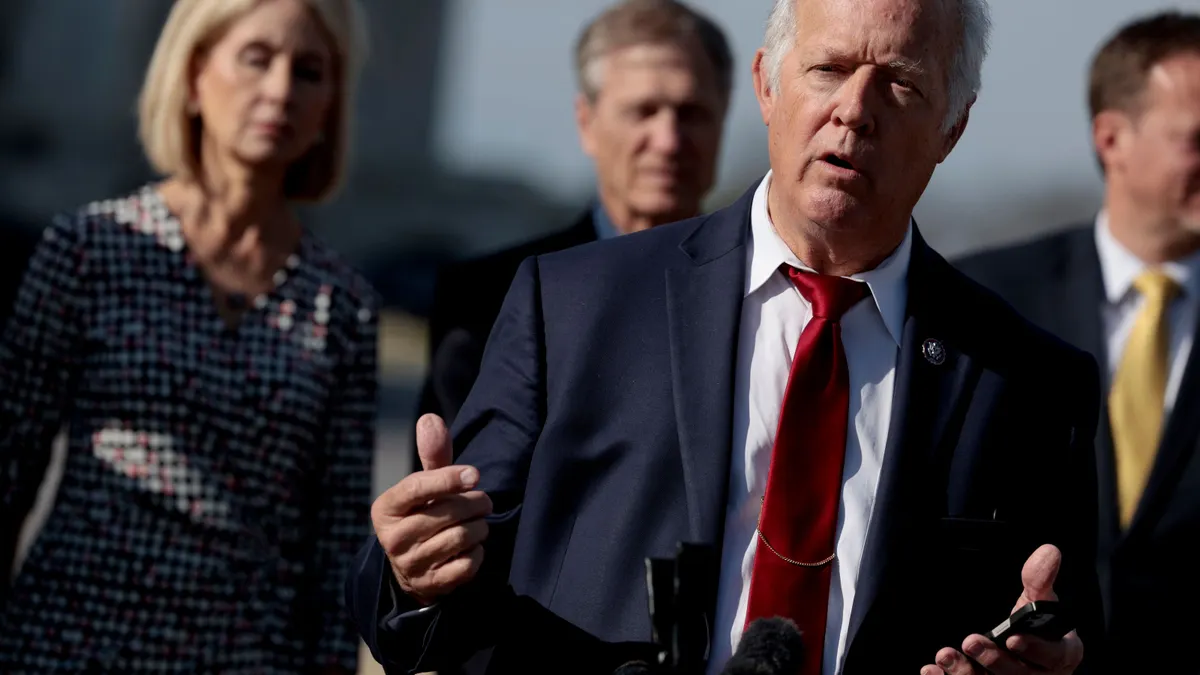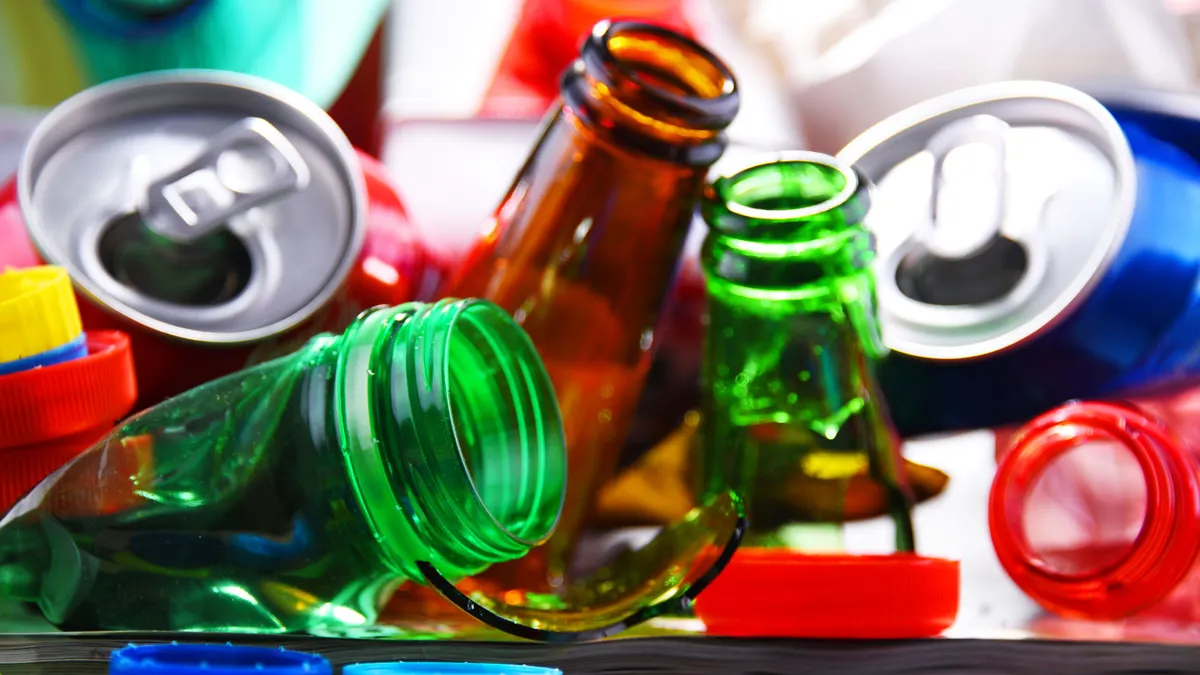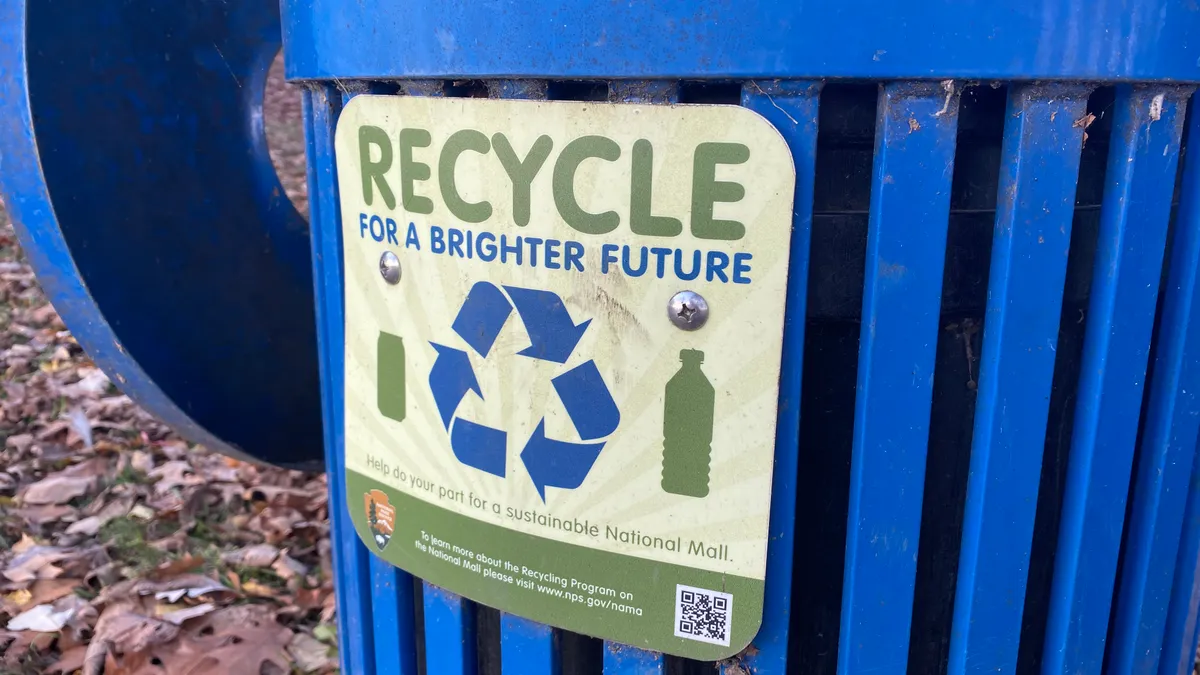Extended producer responsibility for packaging is continuing to scale in parts of Canada as the country works to address concerns about plastic waste.
According to a 2018 World Bank report, Canadians produce over 4 pounds of waste per day — more than double the global average — and rates are predicted to rise by 2050. Environment and Climate Change Canada, a federal agency, reports that Canadians throw away over 3 million metric tons of plastic waste every year; half of that is plastic packaging, and only 9% is recycled.
Under the lens of climate change, the Canadian Council of Ministers of the Environment has committed "to taking action within their jurisdiction to improve Canada's record on reducing and recycling waste." The group cites specific policy focused on plastics, including EPR, as necessary to meeting these goals.
ECCC is also focused on converting the current "take-make-waste" system to a "make-use-return” model. In November 2018, Canada set a federal, provincial and territorial strategy of “zero plastic waste” by 2030 to address this issue.
"These shared stakeholder commitments are leading the initiative toward our 2030 zero plastic goals and are being implemented through two Action Plan phases," said Samantha Bayard, a ECCC spokesperson, noting the potential for Canada to “save $500 million of annual costs, create 42,000 direct and indirect jobs, and prevent 1.82 megatonnes of CO2 equivalent greenhouse gas emissions."
The first phase, laid out in 2019 by the Canadian Council of Ministers of the Environment, described EPR as "one of the most effective mechanisms to support the creation of a circular economy." The plan created targets for collection and recycling performance for companies or organizations implementing programs, which Bayard said will be "a leading approach for reducing plastic waste in a cost-efficient and responsible manner.”
From coffee cups to compost
Ontario has been scaling its Blue Box EPR program for multiple years, including an expansion into two new categories during recent months.
The province has led the recycling arena in Canada since 1975 when a counterculture nonprofit called Is Five Foundation launched the first roadside, multi-material pickup system in Canada. Co-founder Jack McGinnis drove his own pickup truck to collect cardboard boxes, and by 1977 there were an estimated 4,000 residents participating. McGinnis became known as the "father of the blue box.”
Following the Resource Recovery and Circular Economy Act of 2016, that program is in the midst of another evolution that is set to be complete by the end of 2025.
"Over the next few years this regulation will make producers 100% fully responsible for financing and operating Ontario's Blue Box services,” said Gary Wheeler, a spokesperson for Ontario’s Ministry of the Environment, Conservation and Parks.
Circular Materials, a producer responsibility organization, is working on pilots to include drink cups in Toronto’s Blue Bin program and also increase local options to recycle Nespresso coffee pods through the company’s Green Bag program.
Starting on July 3, hot and cold paper beverage cups are now accepted in Toronto’s residential recycling program; plus all blue bins at city-serviced commercial locations, facilities and buildings, charities, institutions and religious organizations, parks and the recycling compartments of street litter bins.
Circular Materials CEO Allen Langdon said the drink cup recycling "represents a major step forward in our mission to enhance recycling processes and efficiency.” He added that “this pilot not only expands the range of recyclable materials accepted in Toronto but also sets the stage for broader recycling advancements across Ontario.”
With hundreds of fast food sites and popular Toronto coffee locations such as Tim Hortons and Starbucks, the country's largest city is considered a perfect demonstration setting for recycling disposable coffee and fountain cup that typically would go to landfills.
Langdon said emptying or rinsing out the cups is crucial since "liquid can contaminate a whole container of recycling which would then make all the materials unrecyclable.” He also noted that “stacking cups, or not removing the lids, would also cause them to be improperly sorted and going to the wrong recycling location."
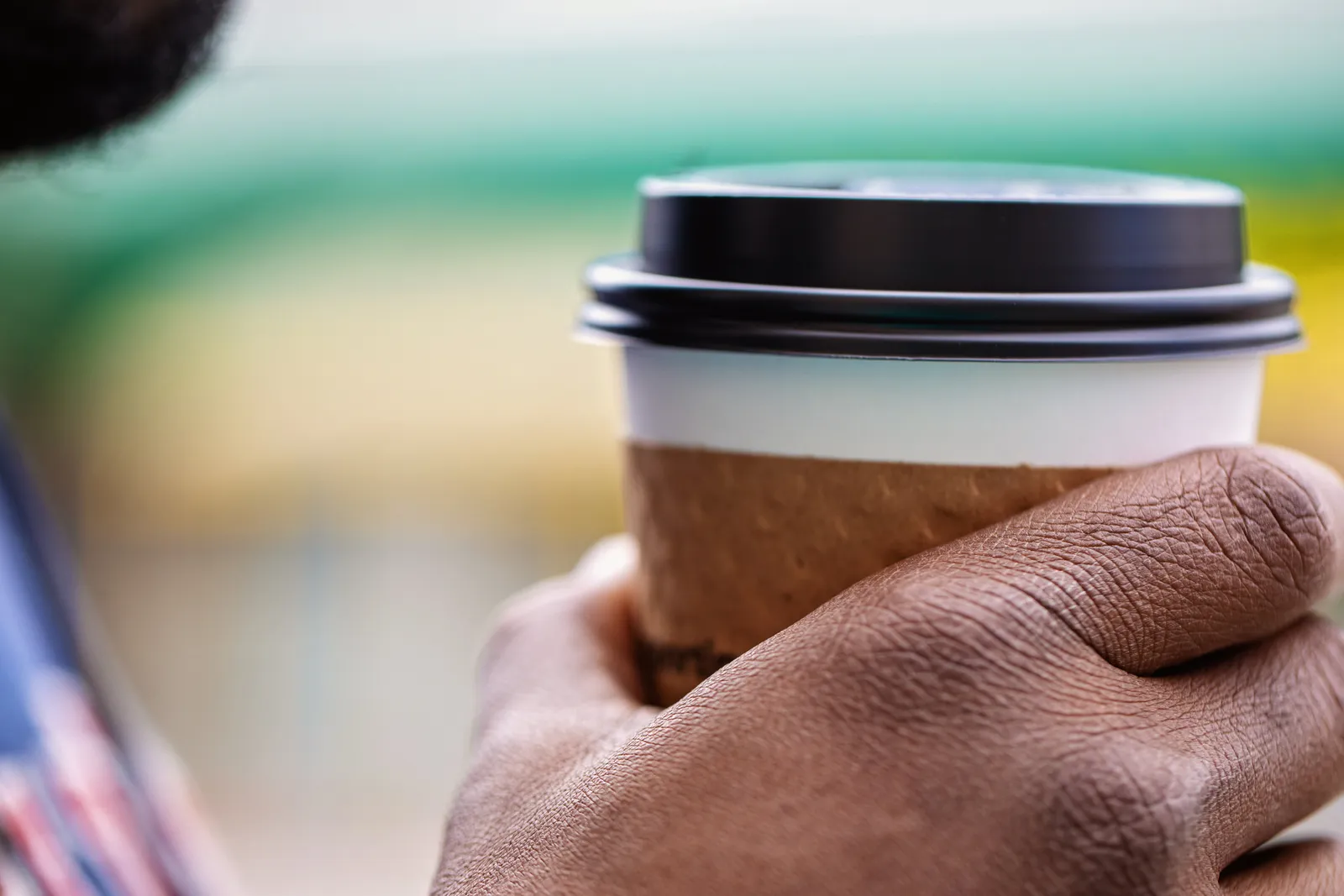
Circular Materials is also collaborating with Nespresso to offer its Green Bag recycling program in London, Ontario, a city of more than 423,000 residents.
Nespresso sells fair trade coffee in disposable aluminum capsules for custom coffee machines, as part of a broader list of offerings. In 2016, the company launched a consumer recycling program stating it was committed to giving capsules “a second life," by adding complimentary recycling bags to all orders. The bag of used aluminum capsules can be dropped of at any Canada post office or mailbox for free return.
Now, Langdon says that Nespresso customers in London can "effortlessly recycle their used capsules by placing them in the designated Green Bag (free from Nespresso) and including it in their curbside residential Blue Box recycling bin."
"This marks another milestone in the journey to provide residents with an easy and convenient solution to recycling in their homes," he said.
Nearly a decade ago, aluminum commodity stock was selling at half what it is today, which underscores the potential value of this product. Langdon said Miller Waste Systems, a recycling facility operator, will separate the bags and send them to a Nespresso recycling partner that recovers the aluminum and diverts the used coffee grounds for composting.
Will it work?
While both projects are receiving a lot of attention as examples of Canada’s efforts to meet its 2030 plastic waste goals, waste activist Emily Alfred said it’s important to consider the bigger picture.
"Ideally, we want these coffee chains to shift to reusable. In France, for example, they serve you in a reusable cup versus a recyclable one,” said Alfred, a senior campaigner with Toronto Environment Alliance.
Alfred said cups have a history of being problematic during the recycling process because they roll off conveyors. Consumers may also stack them together, place the lids on too tight, or leave liquid inside — all of which can cause rejection.
"Plus they're a pretty low-grade product and in the past recyclers couldn't find a market to take them,” said Alfred.
As for the Green Bag program, Alfred said some people view such ideas as “a distraction” from the bigger issue.
“We're asking the consumer to be responsible for all this. The public may feel good about the brand, but in the end, is it really the consumer's responsibility for recovering these materials?"
Langdon, on the other hand, said the Green Bag program "enhances the circular economy by ensuring that valuable materials, such as aluminum, are efficiently recycled and reintroduced into the production cycle.” He also noted the potential for it to reduce the reliance on raw material extraction.
While Alfred agreed that the shift to producer responsibility is a good one, she said it’s important to remember that this means companies — not consumers — bear responsibility for the pollution from their waste.
"The bottom line is, if it can't be recovered, reused, recycled or repaired they shouldn't be allowed to make it,” she said.
As Ontario’s Blue Box program evolves, and others in the Canada look to follow, Langdon said these latest pilot projects will gather valuable insights that "will inform future expansions into other municipalities, promoting wider adoption and increasing our impact across the region."


